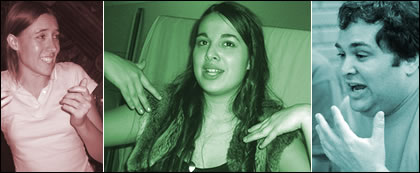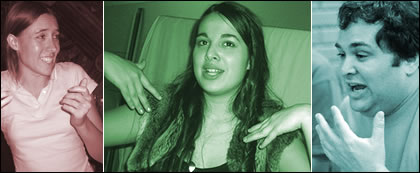
Rapport is important. We need rapport to influence others, to teach and learn, to achieve difficult tasks in groups and even to mate. The latest research reveals gaining rapport is not just about matching body language and being positive, the picture is actually much more complicated. Studies have shown that expressivity is actually one of the most important factors in rapport. An expressive person displays their emotions nonverbally to those around them. Those who are more expressive have been found to elicit greater levels of liking and rapport from others.
Expressivity
The interesting thing is that much research argues that it is not just the expression of positive emotions and states that is related to liking, but also the negative. There are, however, some conflicting findings in the research. Some find negative expressivity is related to liking, others not. This apparent confusion is explained by Tickle-Degnen (2006) in terms of the situation. For example, when talking with someone new it builds rapport to hide negative emotion. But when talking with a good friend, showing negative emotion builds rapport.
This also opens up the question of the dynamic nature of expressivity: how do changes in expressivity across time affect rapport? One effect discussed earlier in this series on nonverbal behaviour is synchrony. This study finds it’s not so much copying each others body language that predicts rapport as whether it’s in synchronisation. Patterns of synchronisation are actually set within rhythmic structures that interact and coordinate.
Coordination
While this research is interesting, the analysis from that study is extremely complicated – too complicated to provide a rule of thumb. Luckily other research suggests there’s a shortcut for spotting nonverbal rhythms associated with rapport. This is based on how ‘tight’ the coordination is between individuals.
High ‘tightness’ in nonverbal behaviour can be seen when one person matches another very quickly. Studies have shown this is associated with anxiety and a forced attempt to gain rapport with someone else. This is the type of behaviour people often display when first meeting.
At the other extreme, very loose matching of nonverbal behaviour is associated with little rapport. It’s at that intermediate level of nonverbal coordination where rapport is highest, when rhythms are neither too loose nor too tight.
Flow
One fascinating question Tickle-Degnen (2006) asks is what aspects of a situation make for high levels of rapport building between individuals? This question is interesting because instead of focussing on individual nonverbal behaviour, this puts the focus on the situation and which aspects of it lead to higher levels of rapport.
To get some purchase on this problem, Tickle-Degnen (2006) uses Csikszentmihalyi’s idea of ‘flow’ – a state when we are operating at our peak, when we feel ‘in the zone’ (Csikszentmihalyi, 1990). When playing sport this means the ball always goes exactly where we want, and in nonverbal behaviour it means we can establish rapport very quickly.
Csikszentmihalyi finds that reaching a ‘flow’ state tends to happen when people are involved in tasks that push them somewhat, but not beyond their abilities. Also, structured rather than unstructured tasks seem to support flow. What this suggests for flow in rapport is that it will develop more quickly when we are engaged in ability-stretching structured tasks with others.
Perhaps this explains why individuals involved in complicated tasks for which they are trained – say, two people at work – are able to establish rapport very quickly. In contrast, those in an unstructured situation not pushing their abilities – say, two people at a party – can take much longer to achieve rapport.
Achieving rapport
These are, of course, only a few of the factors involved in developing rapport. There are still many, many questions to be answered. For example, how does rapport building relate to our motivations in particular encounters? What effect do different cultural contexts (cf. with cultural differences in nonverbal behaviour) or even computer mediated communication have on rapport building (cf. research on emoticons and capitalisation)?
All these questions and more remain to be answered, but the conclusion we can draw from the latest research is that rapport is not all down to slavishly copying body language and being positive. The picture is much more complicated.
Not only can the communication of negative emotion be important in rapport building, but nonverbal behaviour needs to be coordinated to just the right degree. Finally, there are certain situations in which we can get into the ‘rapport zone’ when we are at the top of our interpersonal games.
» This post is part of a series on nonverbal behaviour.


